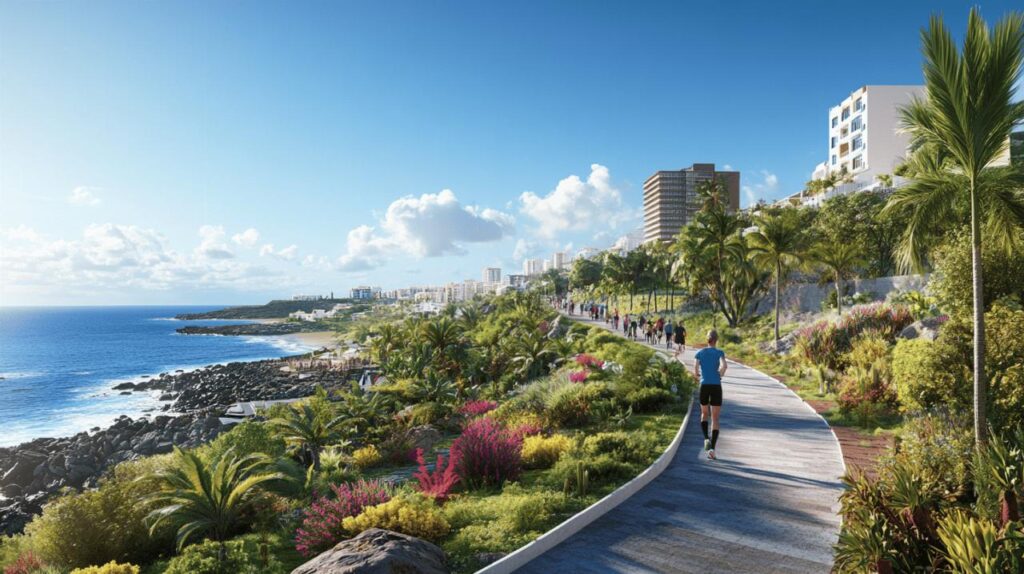The Canary Islands have emerged as a beacon for property investors seeking sunshine, stability, and significant returns. With their year-round pleasant climate, diverse landscapes, and robust tourism sector, these Spanish archipelagos off the northwest coast of Africa present compelling investment opportunities in 2025. Whether you’re looking for holiday rental income, capital appreciation, or a mix of both, understanding the nuances of this market is essential before making any commitments.
Understanding the Canary Islands property market
The property market across the Canary Islands is experiencing remarkable growth in 2025, with prices having surged by an impressive 47% over the past five years. Market experts anticipate further increases of 8-12% throughout 2025, highlighting the strong investment potential of the region. Foreign buyers, particularly from the UK, Germany, and Northern Europe, constitute approximately 70% of all property purchases, seeking either lifestyle changes or profitable investments. The website https://www.canaryislandspropertyworld.es/ provides comprehensive information on current listings and market trends across the islands.
Current market trends across the archipelago
As of mid-2025, property prices average between €2,800 and €3,300 per square metre, representing significant value compared to other European holiday destinations. A particularly telling statistic reveals that a 90-square-metre home that cost €147,029 in 2019 now commands €216,038 in 2024, demonstrating the strong appreciation potential. The islands’ strategic location between Europe, Africa, and the Americas enhances property values, with accessibility being a key factor for investors.
Short-term rental yields can exceed 7% in popular tourist areas, while long-term rentals typically yield between 4-7%, making the Canary Islands particularly attractive for income-seeking investors. New regulations for short-term rentals coming into effect from July 2025 require registration, so investors should factor this into their planning. The purchase process typically takes 8-12 weeks and requires an NIE (foreign identification number), a Spanish bank account, and a 10% deposit, with total purchase costs adding 10-12% to the property price.
Key differences between island investment locations
Each island offers unique investment characteristics that cater to different investor profiles. Tenerife, the largest island, stands out as a hub for luxury and tourism with particularly high rental yields in Costa Adeje and Playa de las Americas. Its diverse property market ranges from affordable apartments starting at €150,000 to luxury villas exceeding €2 million. The island’s popularity is bolstered by attractions such as Mount Teide and its well-developed infrastructure.
Gran Canaria presents diverse investment opportunities with its varied landscapes and generally more affordable options than Tenerife. Las Palmas offers urban living while Maspalomas and Meloneras feature premium beachfront properties with strong rental potential. Lanzarote, with its unique volcanic landscapes, has seen rising popularity for eco-tourism, creating distinctive sustainable investment opportunities. Fuerteventura appeals to investors seeking tranquillity, with more affordable property prices and increasing popularity among remote workers looking for scenic retreats.
The lesser-known islands like La Palma and El Hierro offer untapped potential with lower entry prices. These locations are increasingly attractive for eco-tourism developments, appealing to environmentally conscious investors looking for emerging markets with growth potential. La Palma is known for its natural landscapes while El Hierro focuses on renewable energy and sustainable living.
Profitable Investment Strategies in the Canaries
Developing a clear investment strategy is crucial when approaching the Canary Islands property market. With living costs 15-25% lower than mainland Spain and mortgage payments (€800-€1,200) typically less than rent (€1,000-€1,800) for similar properties, buying property can be financially sensible, especially for those planning to stay longer than three years.

Holiday rental potential and tourism-driven returns
Tourism remains the principal driver of rental demand across the islands, with 16 million visitors recorded in 2024 alone. This creates substantial opportunities for short-term holiday rentals, particularly in established tourism hotspots. Tenerife excels in the short-term rental market, with areas like Costa Adeje, Los Cristianos, and Playa de Las Americas offering strong returns due to consistent tourist demand throughout the year.
Investors targeting the holiday rental market should focus on properties within walking distance of beaches, restaurants, and attractions. Properties with desirable features such as sea views, swimming pools, or unique architectural elements can command premium rates. However, investors must consider seasonal fluctuations in occupancy rates and factor in management costs if they don’t plan to handle bookings and maintenance themselves. Local property management services can help maximise returns for absent owners, though their fees will impact overall profitability.
Long-term capital growth prospects by island
For investors prioritising capital appreciation over immediate rental income, understanding the growth trajectory of each island is essential. Tenerife and Gran Canaria, with their established infrastructure and diverse economies, offer relatively stable long-term growth prospects. Areas undergoing regeneration or benefiting from new infrastructure projects often present opportunities to capitalise on future value increases.
Lanzarote and Fuerteventura are increasingly attracting luxury developments, with rising demand for high-end properties driving price growth in select areas. The luxury property market is particularly strong in Costa Adeje in Tenerife South, where exclusive ocean-view villas can command premium prices, and in Maspalomas and Meloneras in Gran Canaria, which feature exclusive homes and golf course properties.
Emerging areas like La Palma, El Hierro, and La Gomera offer lower entry prices with potentially higher percentage growth as these locations become more accessible and developed. Investors considering these less-developed islands should be prepared for longer investment horizons but may benefit from substantial appreciation as these markets mature. Eco-friendly developments are particularly promising in these locations, catering to growing demand for sustainable living options.
The Canary Islands’ favourable tax environment adds another dimension to their investment appeal. Lower VAT rates (7% compared to mainland Spain’s 21%) and various tax exemptions make property acquisition and ownership more affordable than on the mainland. Foreign buyers can secure mortgages with typically around 30% down payment, with many local banks offering competitive rates to international investors.



